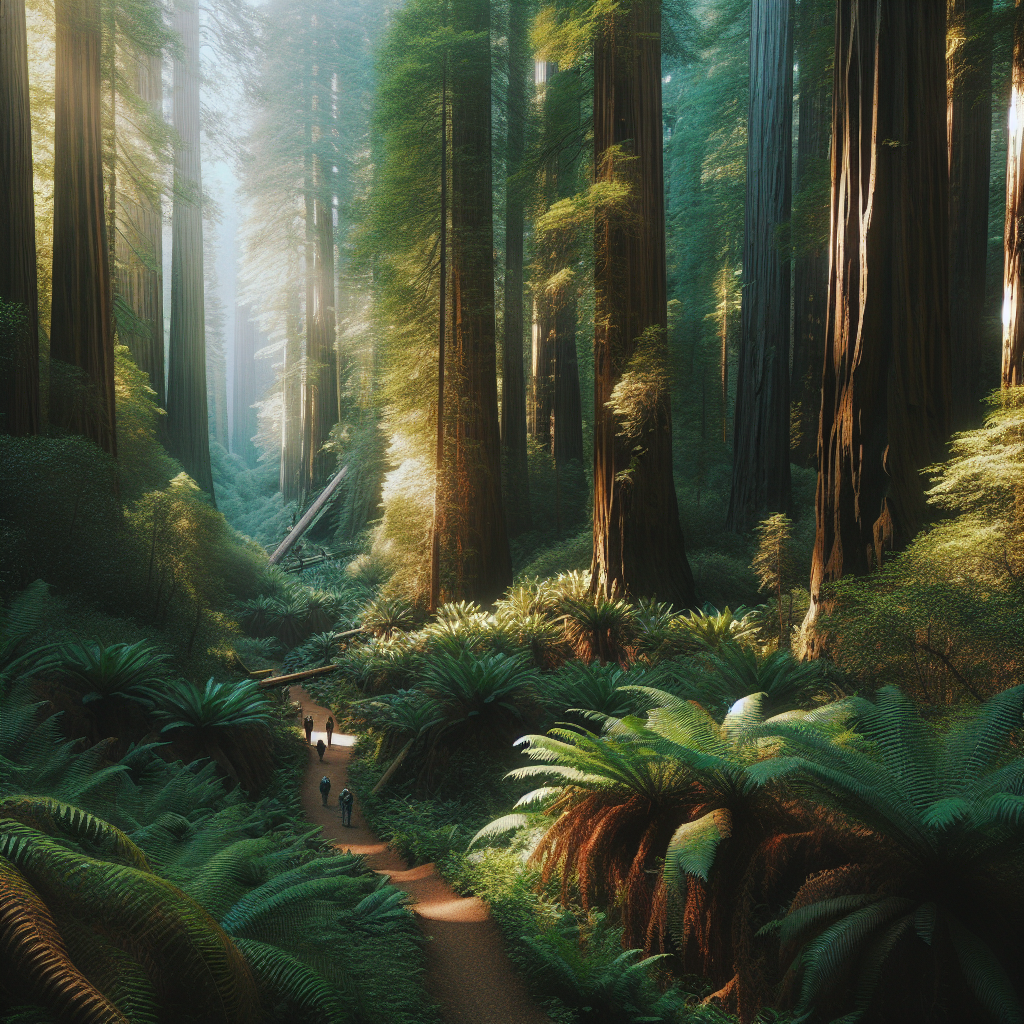Redwood National Park is a natural wonder that boasts a diverse array of plant life, with the iconic coast redwood tree as the undisputed star of the show. From towering conifers to delicate wildflowers, the park’s lush vegetation plays a crucial role in supporting local ecosystems and wildlife. In this comprehensive guide, we’ll delve into the fascinating world of Redwood National Park’s plants, providing insights and resources for nature enthusiasts and park visitors alike.
The Iconic Coast Redwood
The coast redwood (Sequoia sempervirens) is the undisputed centerpiece of Redwood National Park. These towering giants can reach heights of over 300 feet, making them the tallest trees on Earth. The park’s old-growth redwood forests are a testament to the resilience and longevity of these remarkable trees, with some individuals estimated to be over 2,000 years old.
Diverse Tree Species

While the coast redwood dominates the landscape, Redwood National Park is home to a variety of other tree species that contribute to the park’s lush canopy. These include:
- Tanoak (Notholithocarpus densiflorus)
- Madrone (Arbutus menziesii)
- Red alder (Alnus rubra)
- Big leaf maple (Acer macrophyllum)
- Douglas-fir (Pseudotsuga menziesii)
- California bay (Umbellularia californica)
Each of these trees plays a vital role in the park’s ecosystem, providing food, shelter, and habitat for a wide range of wildlife.
Understory Plants and Wildflowers
Beneath the towering trees, Redwood National Park’s understory is a tapestry of diverse plant life. Visitors can discover a variety of ferns, mosses, and wildflowers, including:
- Sword fern (Polystichum munitum)
- Redwood sorrel (Oxalis oregana)
- Trillium (Trillium spp.)
- Rhododendron (Rhododendron spp.)
- Bleeding heart (Dicentra formosa)
These plants add to the park’s lush and verdant atmosphere, creating a visually stunning and ecologically rich environment.
Invasive Species and Restoration Efforts
While Redwood National Park is home to a wealth of native plant species, the park also faces challenges from invasive plants that can disrupt the delicate balance of local ecosystems. Park managers and conservation organizations work tirelessly to identify and remove these invasive species, such as Himalayan blackberry (Rubus armeniacus) and English ivy (Hedera helix).
In addition to these efforts, the Homegrown National Park initiative encourages individuals and communities to plant native species and remove invasive plants, helping to restore habitats and support local wildlife. The Native Plants Finder database is a valuable resource for finding the right native plants for your specific region or zip code.
Visiting Redwood National Park
Redwood National Park is open year-round, with no entrance fees. However, some facilities and services may have associated costs, and operating hours can vary by season. Visitors are encouraged to check the park’s official website or contact the park directly for the most up-to-date information.
When exploring the park, visitors can immerse themselves in the beauty and diversity of Redwood National Park’s plant life by hiking the park’s many trails and scenic drives. From the towering coast redwoods to the delicate wildflowers, the park’s flora is a true wonder to behold.
Conclusion
Redwood National Park is a natural treasure that showcases the incredible diversity and resilience of California’s native plant life. From the iconic coast redwood to the delicate understory plants, the park’s flora plays a vital role in supporting local ecosystems and wildlife. By understanding and appreciating the park’s plant life, visitors can gain a deeper appreciation for the importance of conservation and restoration efforts, and contribute to the ongoing efforts to protect and preserve these remarkable natural wonders.
References:
- California State Parks. (n.d.). Plants. Retrieved from https://www.parks.ca.gov/?page_id=28127
- Homegrown National Park. (n.d.). Homegrown National Park. Retrieved from https://homegrownnationalpark.org
- Homegrown National Park. (n.d.). Native Plants Finder. Retrieved from https://homegrownnationalpark.org/native-plants-finder/
- National Park Service. (2020, January 07). Plants, Animals & More. Retrieved from https://www.nps.gov/learnandexplore/plants-animals-more.htm
- National Park Service. (2022, October 27). Plants. Retrieved from https://www.nps.gov/pefo/learn/nature/plants.htm

